#subsurface ocean
Photo
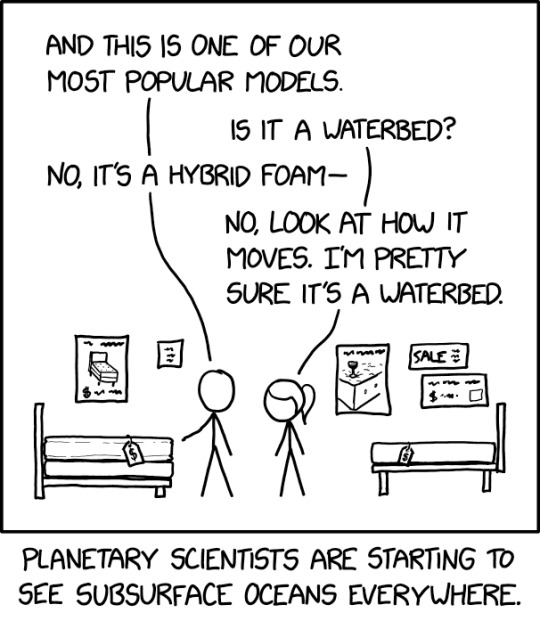
This rumpled fabric at the corner looks like evidence of ongoing tectonic activity.
Planetary Scientist [Explained]
185 notes
·
View notes
Note
which solar system planet is the most creature (tm). mine is jupiter. it has a big eye. also the galilean moons? those are her children your honor!!!
Jupiter IS a top contender for its eye and rock collection (children). Idk if I can pick just one, but I'm tied between–
Earth: has things skittering around on and in it, possibly underwent mitosis (/j) to create its moon
Neptune: also has an eye AND has a weirdly high temperature. Did u know that Neptune gets 60% less sunlight than Uranus yet still has significantly faster planetary winds? And also emits approximately 2.5x as much energy into space as it receives from the sun despite getting so little, as compared to Uranus, which barely gives off energy at all? actually u know what, 3-way tie
Uranus: why's that feller so cold. what's it doing with all the heat. why's its rotational axis on its side like that. is it taking a nap
#honorable mention goes to jupiter's kid europa for its subsurface ocean. u just KNOW its got some manner of beasts swimming around in there#anonymous#ask#planets#space#outer space
6 notes
·
View notes
Link
Embark on an interstellar odyssey with SpaceTime Series 27 Episode 56, where we delve into the enigmatic geysers of Saturn's icy moon Enceladus. Unravel the mystery behind these spectacular jets as new research draws parallels with Earth's own San Andreas Fault, suggesting a strike-slip motion akin to our tectonic shifts may be powering these icy eruptions. Discover how this celestial phenomenon could hold the keys to conditions ripe for life beneath Enceladus's frozen crust.
The episode then shifts to the dusty red plains of Mars, where NASA scientists brace for the onslaught of solar storms as our Sun approaches its fiery peak. Learn how the absence of a protective magnetic field on Mars presents a unique opportunity to observe the effects of solar radiation on the Martian surface and the implications for future human explorers.
In an unexpected twist, we recount the tale of space junk from the International Space Station making an unwelcome visit to a Florida home, reminding us of the ever-present dance between our orbital endeavors and the pull of Earth's gravity.
Join us as we navigate these cosmic currents and more, including the potential impact of solar and dust storms on Mars's ancient watery past and the measures being taken to protect future missions from the Sun's wrath.
For a voyage through the latest in space exploration and the intricacies of our solar system, tune into SpaceTime with Stuart Gary. Navigate the celestial highways with us and become part of a journey that transcends our earthly bounds.
Support the show and access ad-free episodes at https://www.spreaker.com/show/spacetime. Follow our cosmic conversations on Twitter @stuartgary, Instagram, YouTube, and Facebook. Join us as we unravel the mysteries of the universe, one episode at a time.
(00:00) Stuart Garry brings you the latest in spacetime series 27
(00:46) New study suggests tiger stripes on Enceladus may control geyser activity
(06:45) NASA scientists studying how solar storms and radiation will affect Mars in the future
(14:08) Scientists confirm that space junk slammed into a Florida home last month
(16:13) New research warns that older adults who lose sense of smell may lose mobility faster
(19:08) Apple is expected to announce its new iPads this week with M four chips
(21:06) Spacetime is available every Monday, Wednesday and Friday through Apple PodcastsThis episode is proudly supported by NordPass. Secure your digital journey across the cosmos with a password manager you can trust. Find your stellar security solution at https://www.bitesz.com/nordpass.
Listen to SpaceTime on your favorite podcast app and follow us on Twitter @stuartgary, Instagram, YouTube, and Facebook.
#cassini#enceladus#faults#geoscience#geysers#heating#mars#mission#moon#nature#ocean#radiation#saturn's#solar#storms#strike-slip#stripes#subsurface#tidal#tiger
0 notes
Text
Methane on the surface of Eris and Makemake do not have the correct isotopic ratio to be formed primordially. The conclusion is that the methane was formed by geochemistry which requires a hot core, which might also make subsurface oceans possible.
0 notes
Text

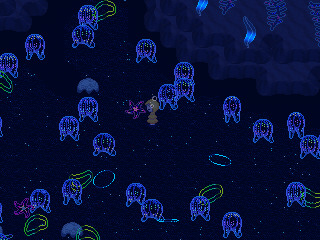
Ocean Subsurface, I love the starfish here
1 note
·
View note
Text
The Best News of Last Week - August 21, 2023
🌊 - Discover the Ocean's Hidden Gem Deep down in the Pacific
1. Massachusetts passed a millionaire's tax. Now, the revenue is paying for free public school lunches.

Every kid in Massachusetts will get a free lunch, paid for by proceeds from a new state tax on millionaires.
A new 4% tax on the state's wealthiest residents will account for $1 billion of the state's $56 billion fiscal budget for 2024, according to state documents. A portion of those funds will be used to provide all public-school students with free weekday meals, according to State House News Service.
2. Plant-based filter removes up to 99.9% of microplastics from water

Researchers may have found an effective, green way to remove microplastics from our water using readily available plant materials. Their device was found to capture up to 99.9% of a wide variety of microplastics known to pose a health risk to humans.
3. Scientists Find A Whole New Ecosystem Hiding Beneath Earth's Seafloor
youtube
Most recently, aquanauts on board a vessel from the Schmidt Ocean Institute used an underwater robot to turn over slabs of volcanic crust in the deep, dark Pacific. Underneath the seafloor of this well-studied site, the international team of researchers found veins of subsurface fluids swimming with life that has never been seen before.
It's a whole new world we didn't know existed.
4. How solar has exploded in the US in just a year

Solar and storage companies have announced over $100 billion in private sector investments in the US since the passage of the Inflation Reduction Act (IRA) a year ago, according to a new analysis released today by the Solar Energy Industries Association (SEIA).
Since President Joe Biden signed the IRA in August 2022, 51 solar factories have been announced or expanded in the US.
5. Researchers have identified a new pack of endangered gray wolves in California

A new pack of gray wolves has shown up in California’s Sierra Nevada, several hundred miles away from any other known population of the endangered species, wildlife officials announced Friday.
It’s a discovery to make researchers howl with delight, given that the native species was hunted to extinction in California in the 1920s. Only in the past decade or so have a few gray wolves wandered back into the state from out-of-state packs.
6. Record-Breaking Cleanup: 25,000 Pounds of Trash Removed from Pacific Garbage Patch

Ocean cleanup crews have fished out the most trash ever taken from one of the largest garbage patches in the world.
The Ocean Cleanup, a nonprofit environmental engineering organization, saw its largest extraction earlier this month by removing about 25,000 pounds of trash from the Great Pacific Garbage Patch, Alex Tobin, head of public relations and media for the organization
7. The Inflation Reduction Act Took U.S. Climate Action Global

The U.S. Inflation Reduction Act (IRA) aimed to promote clean energy investments in the U.S. and globally. In its first year, the IRA successfully spurred other nations to develop competitive climate plans.
Clean energy projects in 44 U.S. states driven by the IRA have generated over 170,600 jobs and $278 billion in investments, aligning with Paris Agreement goals.
---
That's it for this week :)
This newsletter will always be free. If you liked this post you can support me with a small kofi donation here:
Buy me a coffee ❤️
Also don’t forget to reblog this post with your friends.
1K notes
·
View notes
Photo

2024 March 29
Galileo's Europa
Image Credit: NASA, JPL-Caltech, SETI Institute, Cynthia Phillips, Marty Valenti
Explanation: Looping through the Jovian system in the late 1990s, the Galileo spacecraft recorded stunning views of Europa and uncovered evidence that the moon's icy surface likely hides a deep, global ocean. Galileo's Europa image data has been remastered here, with improved calibrations to produce a color image approximating what the human eye might see. Europa's long curving fractures hint at the subsurface liquid water. The tidal flexing the large moon experiences in its elliptical orbit around Jupiter supplies the energy to keep the ocean liquid. But more tantalizing is the possibility that even in the absence of sunlight that process could also supply the energy to support life, making Europa one of the best places to look for life beyond Earth. The Juno spacecraft currently in Jovian orbit has also made repeated flybys of the water world, returning images along with data exploring Europa's habitability. This October will see the launch of the NASA's Europa Clipper on a voyage of exploration. The spacecraft will make nearly 50 flybys, approaching to within 25 kilometers of Europa's icy surface.
∞ Source: apod.nasa.gov/apod/ap240329.html
91 notes
·
View notes
Text
I'm not including Earth's moon because I think we can agree that would result in a Moonsweep. But the Solar System is home to 685 other known moons that are also weird and wonderful!
Pictures and fun facts of all these moons below the read more!

Phobos. The larger of Mars's two moons, it is getting closer to Mars at a rate of 1.8 m/year. It will either crash into the planet or break apart, forming a ring!

Deimos. Tiny little moon with loose sediment possibly 100 m thick on its surface.

Europa. One of Jupiter's four Galilean moons, so-called because they were discovered by Galileo. This moon has an ocean underneath the icy surface and may be one of the best places to search for extraterrestrial life!

Callisto. One of Jupiter's four Galilean moons. Used to be considered one of the most boring moons, but more recent evidence suggests that it has an ocean beneath its icy/rocky surface!
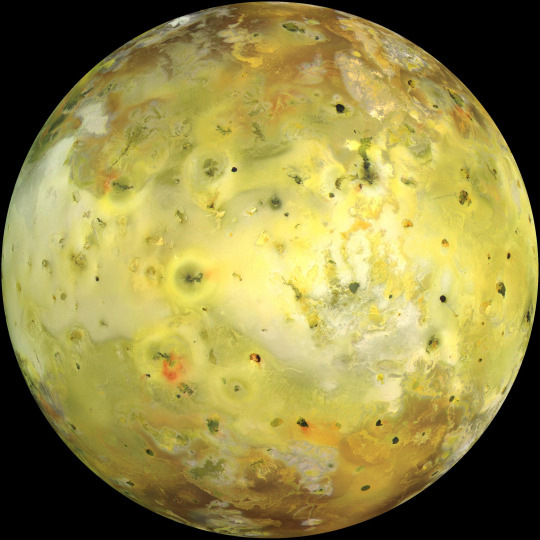
Io. One of Jupiter's four Galilean moons. The most volcanically-active body in the Solar System!
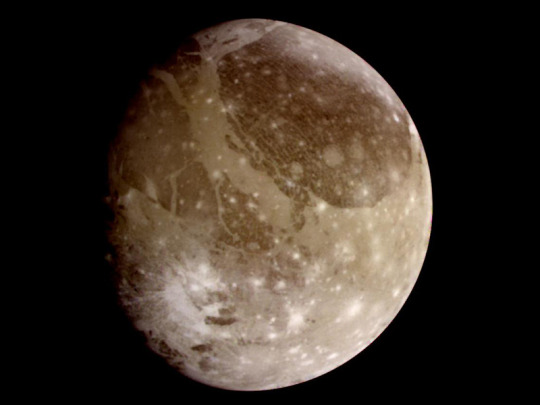
Ganymede. One of Jupiter's four Galilean moons. The largest moon in the Solar System and the only known one with its own magnetic field! Also thought to have a subsurface ocean.

Titan. The only moon with a substantial atmosphere, and the only known body besides Earth with present-day liquid on the surface! Titan has lakes, rivers, and seas made of liquid methane and ethane.

Enceladus. A tiny moon, but a very scientifically interesting one! It has a liquid water ocean beneath its icy shell, and it appears to have vents where plumes of water shoot out into space. Also thought to be one of the best places to search for life.
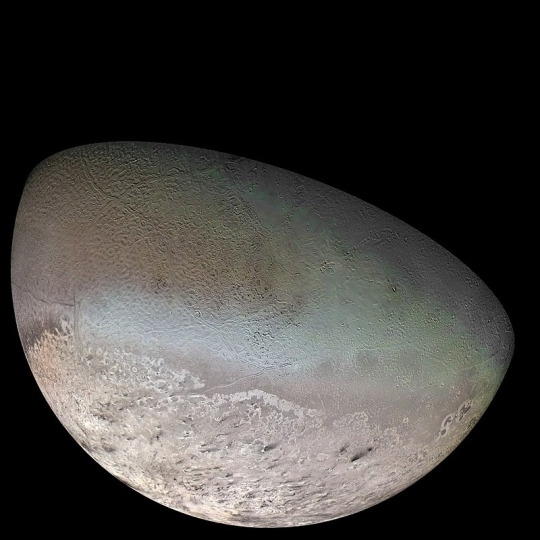
Triton. Neptune's largest moon. One of the few geologically-active moons in the Solar System with a surface made of nitrogen ice!
All photos from NASA.
[Image ID: 9 photos showing the moons Phobos, Deimos, Europa, Callisto, Io, Ganymede, Titan, Enceladus, and Triton. end ID]
#space#science#geology#moon#this was fun to make#our solar system is an incredible place!#i love planetary science so much
698 notes
·
View notes
Text
My headcanons for the location of the Third House because this is what my brain decided to focus on tonight:
References to tridents (the Tridentarii, Babs' triple bladed knife) probably place Ida on or near Neptune.
Names in the Third royal line represent purple flowers (Ianthe, Violabeth), possibly a reference to the myth of Clytie, an oceanid nymph.
Rather than living in some installation on a gaseous planet, it's possible a colony was set up on Triton, Neptune's largest moon.
Triton has a retrograde orbit, indicating that it was likely captured rather than formed in the planet's accretion disk. This means it would have been subject to significant tidal forces which would contribute to warming.
It also has a solid core, which would provide radiogenic heating.
Triton is tidally locked to Neptune, meaning that the same side of the moon always faces the planet. This means that its poles experience seasons as Neptune orbits the sun every 165 years, with one pole remaining in the sun for half the orbital period.
This constant sun exposure plus a greenhouse effect from nitrogen ice would trap in additional heat.
These various heating sources and cryovolcanic activity point to the likelihood of a subsurface water ocean.
In conclusion, civilization on Ida may take the form of a series of subaquatic installations where the inhabitants migrate between the two poles every ~80 years to preserve heat, which fits with both the ocean imagery and the purple flower/heliotrope imagery of turning to face the sun!
68 notes
·
View notes
Note
Ok but what about those top 5 moons?
WELL THANK YOU FOR ASKING
Mimas
we see you. death star ass

Titan
Yes it's cool that it's the second largest moon in the solar system and it has a dense atmosphere and lakes and rains of methane. But mostly it looks very soft and I want to pet it.

Io
Volcanoes. Volcanoes. Her volcanoes. Plumes seen from space. Tidal heating. Gravitational forces from proximity to Jupiter causing its surface to stretch up to 300 feet as it rotates. Thee most geologically active place in the solar system. Looks like pizza and smells like farts
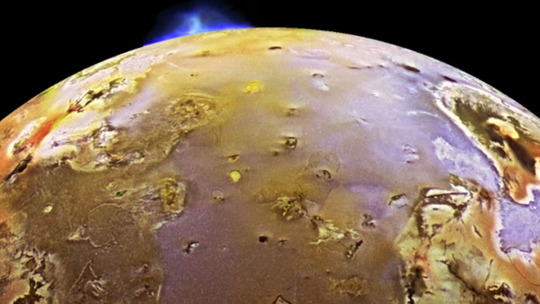
Enceladus
So so so pretty. Also: cryovolcanism!!! Ice plumes that add to Saturn's rings!! Subsurface ocean potentially harboring life!!!!
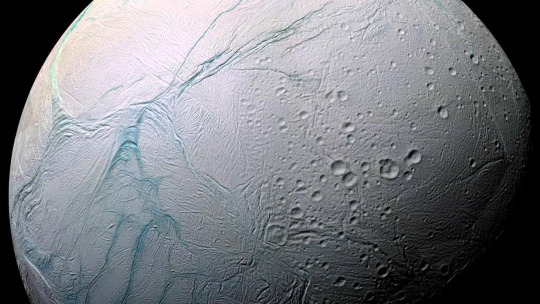
Pan
Shepherd moon orbiting inside Saturn's rings sweeping up ring particles around its equator. I love you funky little space pierogi you are my favorite.
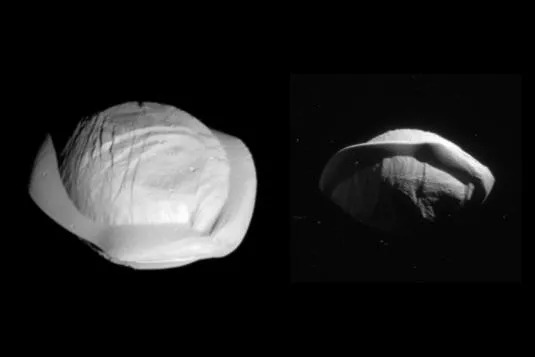
36 notes
·
View notes
Text
As far as we know, life needs water.
Due to this simple truth, astronomers and astrobiologists have naturally focused their efforts on identifying exoplanets that might harbor liquid oceans. Water in its liquid form can exist on a planet's surface, where direct heat from its host star can keep the substance from freezing — but it can also exist beneath a planet's surface, where internal sources of heat can sustain flowing, subsurface oceans.
In a new analysis, NASA has revealed that 17 discovered exoplanets could house subsurface oceans buried below thick sheets of ice. These worlds, much like the icy moons of Jupiter, could therefore be promising places to search for biosignatures — chemical signs of life.
Continue Reading.
67 notes
·
View notes
Photo

Galileo's Europa : Looping through the Jovian system in the late 1990s, the Galileo spacecraft recorded stunning views of Europa and uncovered evidence that the moon's icy surface likely hides a deep, global ocean. Galileo's Europa image data has been remastered here, with improved calibrations to produce a color image approximating what the human eye might see. Europa's long curving fractures hint at the subsurface liquid water. The tidal flexing the large moon experiences in its elliptical orbit around Jupiter supplies the energy to keep the ocean liquid. But more tantalizing is the possibility that even in the absence of sunlight that process could also supply the energy to support life, making Europa one of the best places to look for life beyond Earth. What kind of life could thrive in a deep, dark, subsurface ocean? Consider planet Earth's own extreme shrimp. via NASA
630 notes
·
View notes
Link
The Space, Astronomy, and Science Podcast.
SpaceTime Series 27 Episode 19
*Saturn’s Moon Mimas Hides a Watery Secret
Mimas, once known merely as the Death Star look-alike, has revealed a startling secret. New research from the Cassini mission data shows that beneath its icy facade, this diminutive moon harbors a youthful subsurface ocean. Only 400 kilometers wide, Mimas's aquatic interior is geologically green, estimated to be a mere 5 to 15 million years old.
*Juno's Daring Dance with the Volcanic Io
NASA's Juno spacecraft has just grazed past the fiery surface of Io, Jupiter's most volcanic moon. During its intimate encounter, Juno captured the moon's volcanic fury, with plumes reaching into the darkness of space. This mission seeks to uncover whether Io's volcanic vigor stems from a molten heart—an ocean of magma beneath its crust.
*Cold Origins of Organic Compounds in Space
A groundbreaking study has found that certain organic compounds, like those in asteroids, might have originated in the frigid expanses of interstellar space. This challenges the prevailing belief that such compounds could only form near the heat of stars, opening new doors in our quest to understand the chemistry of life beyond Earth.
*The Berlin Meteorite: A Rare Visitor Decoded
After a fiery descent witnessed across central Europe, fragments of an asteroid that landed near Berlin have been identified as a rare type of chondrite known as an orbrite. This discovery provides a unique glimpse into the diverse materials that wander our cosmic neighborhood.
Join us as we delve into these discoveries and more on SpaceTime with Stuart Gary.
https://spacetimewithstuartgary.com https://bitesz.com
Listen to SpaceTime on your favorite podcast app with our universal listen link: https://spacetimewithstuartgary.com/listen and access show links via https://linktr.ee/biteszHQ
For more SpaceTime and show links: https://linktr.ee/biteszHQ
For more space and astronomy podcasts visit our HQ at https://bitesz.com
Your support is needed... **Support SpaceTime with Stuart Gary: Be Part of Our Cosmic Journey!** SpaceTime is fueled by passion, not big corporations or grants. We're on a mission to become 100% listener-supported, allowing us to focus solely on bringing you riveting space stories without the interruption of ads. **Here's where you shine:** Help us soar to our goal of 1,000 subscribers! Whether it's just $1 or more, every contribution propels us closer to a universe of ad-free content. **Elevate Your Experience:** By joining our cosmic family at the $5 tier, you'll unlock: - Over 350 commercial-free, triple episode editions. - Exclusive extended interviews. - Early access to new episodes every Monday. Dive in with a month's free trial on Supercast and discover the universe of rewards waiting for you! [Join the Journey with SpaceTime](https://bitesznetwork.supercast.tech/) [Learn More About Us](https://spacetimewithstuartgary.com) Together, let's explore the cosmos without limits!
#space #astronomy #science #spacetimewithstuartgary #podcast #Mimas #Juno #Io #OrganicCompounds #Asteroid #BerlinMeteorite
#callisto#cassini#data#death#enceladus#europa#ganymede#juno#life#mimas#mission#moon#moons#ocean#of#origins#saturn's#shaped#star#subsurface
0 notes
Text
Residual and radioactive heat may make some Kuiper Belt dwarf planets geologically active.
0 notes
Text

Yume 2kki - Ocean Subsurface
52 notes
·
View notes
Text
i was discovered deep in the subsurface oceans of europa
37 notes
·
View notes